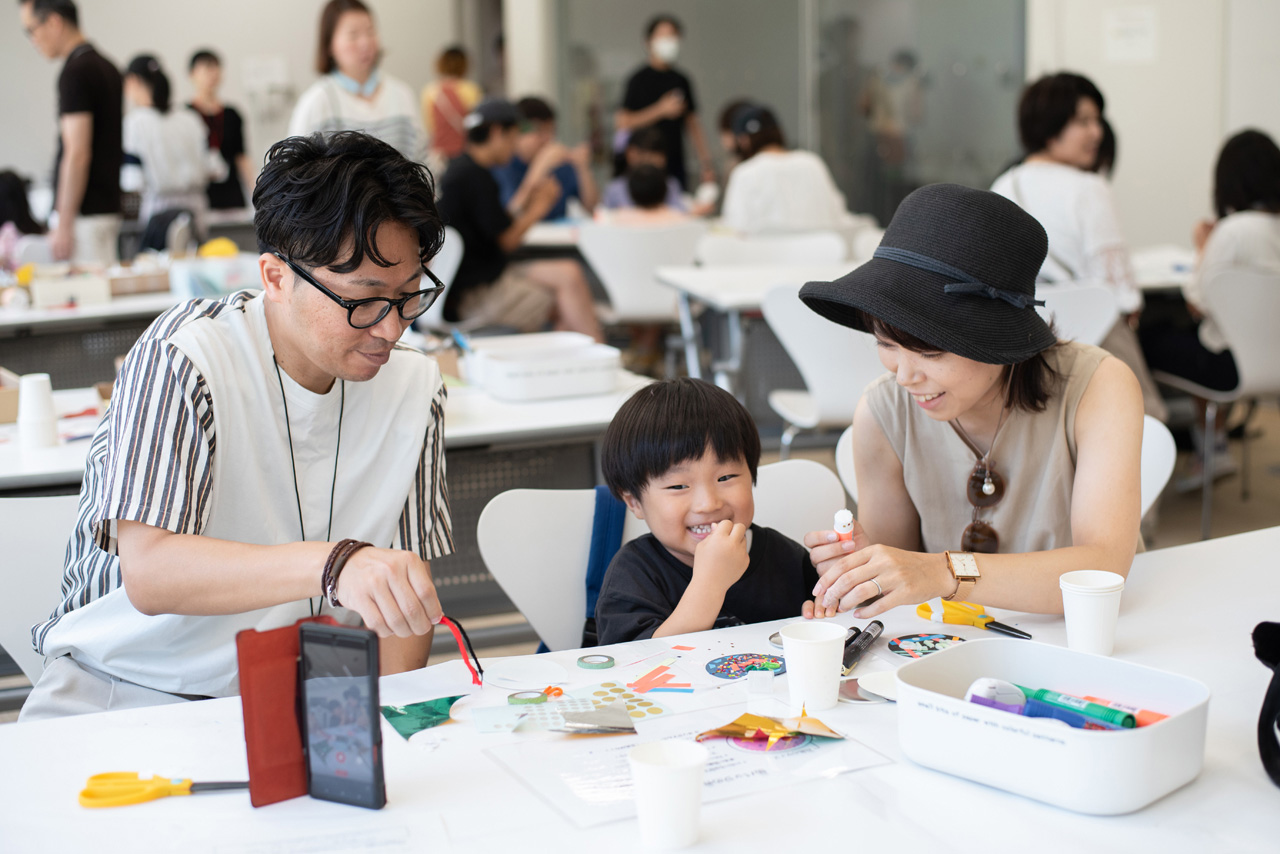Reports
April 11, 2025
2024 Event Report: Come-As-You-Art Craft Workshop 2024 – Button Badge like a Firefly!? –
 Ended
Ended Come-As-You-Art Craft Workshop 2024 – Button Badge like a Firefly!? –
The National Art Center, Tokyo
Dates August 10, 2024
- Workshop
Index
The National Art Center, Tokyo is known as one of Tokyo’s premier art spots. On Saturday, August 10, it held its summer workshop, “Come-As-You-Art Craft Workshop 2024 – Button Badge like a Firefly!? –” This button badge-making workshop required no reservations and welcomed everyone from babies to adults.
The event attracted 213 participants throughout the day, including parents with preschool children, three-generation families enjoying crafts together, adult groups, and domestic and foreign tourists. Everyone enjoyed creating their own unique badges using combinations of materials with various textures and colors, from colored paper to decorative tape.
An Art Spot Where Different People Meet
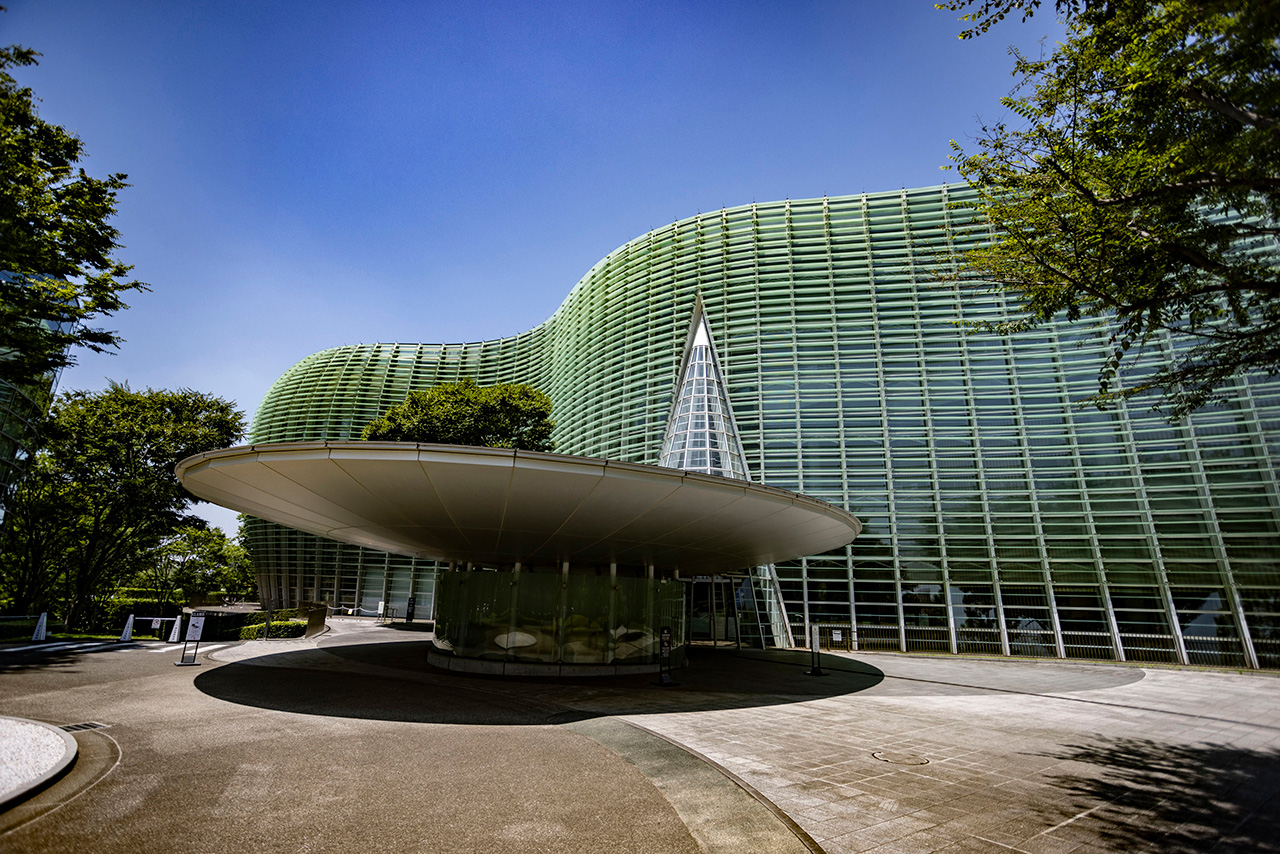
Located in Roppongi, Tokyo, The National Art Center, Tokyo boasts one of the largest exhibition spaces in Japan. On the day of the event, the museum was bustling with visitors attending six simultaneous exhibitions: two special exhibitions featuring contemporary art and manga, along with four Artist Associations’ Exhibitions.
The facility includes cafes, a restaurant, museum shops, an auditorium, and outdoor exhibition spaces. Many areas are accessible free of charge, attracting visitors for purposes other than viewing exhibitions. A significant number of tourists visit to admire the architecture, distinguished by its undulating glass curtain wall.
The event was held in a lecture room on the third floor. Though slightly removed from the busy special exhibition galleries, about three families were already waiting outside the venue 15 minutes before opening.
Playing and Talking While Creating
Participants created large button badges, 7.5 cm in diameter. They could draw patterns with pens on circular mat board bases and/or create collages using colored paper and tape. Only simple tools like scissors and pens were used, so even young children could create independently.
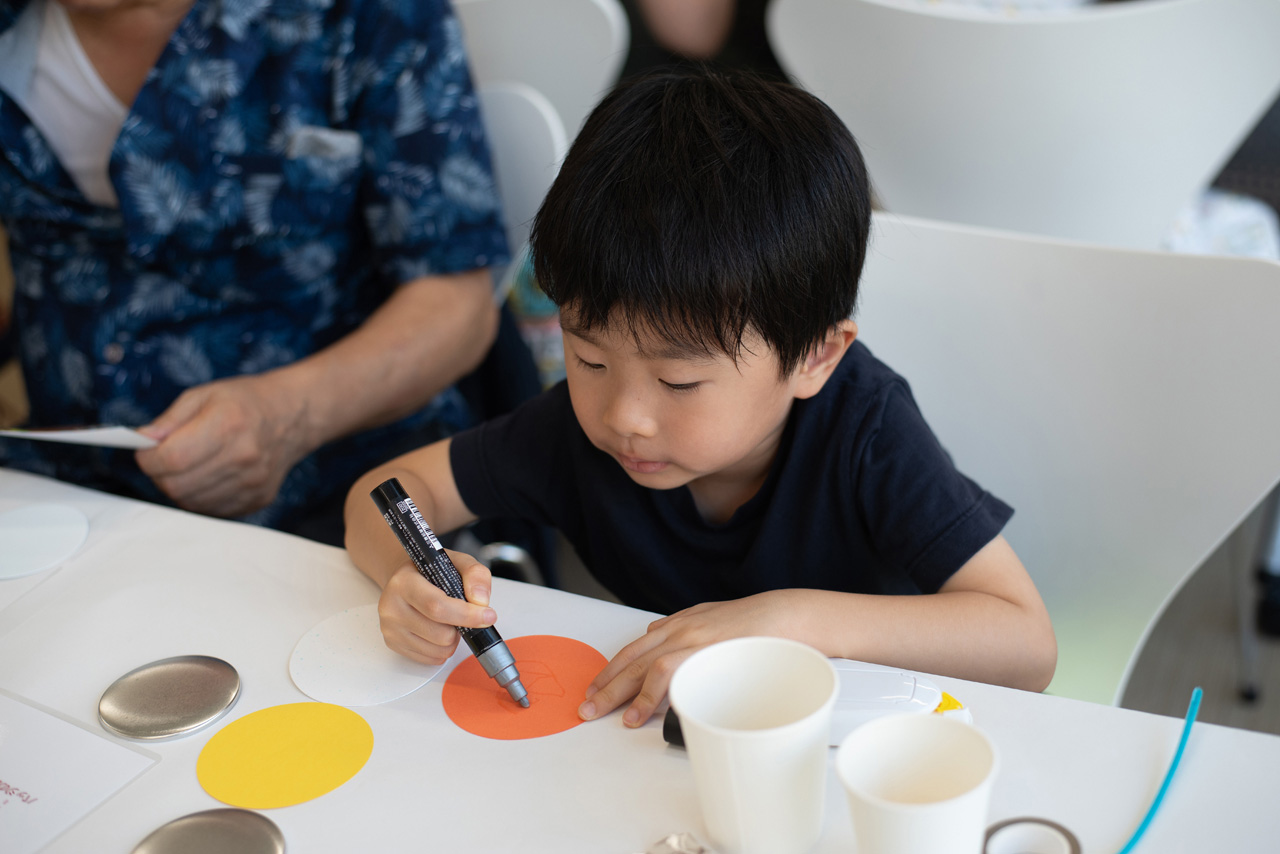
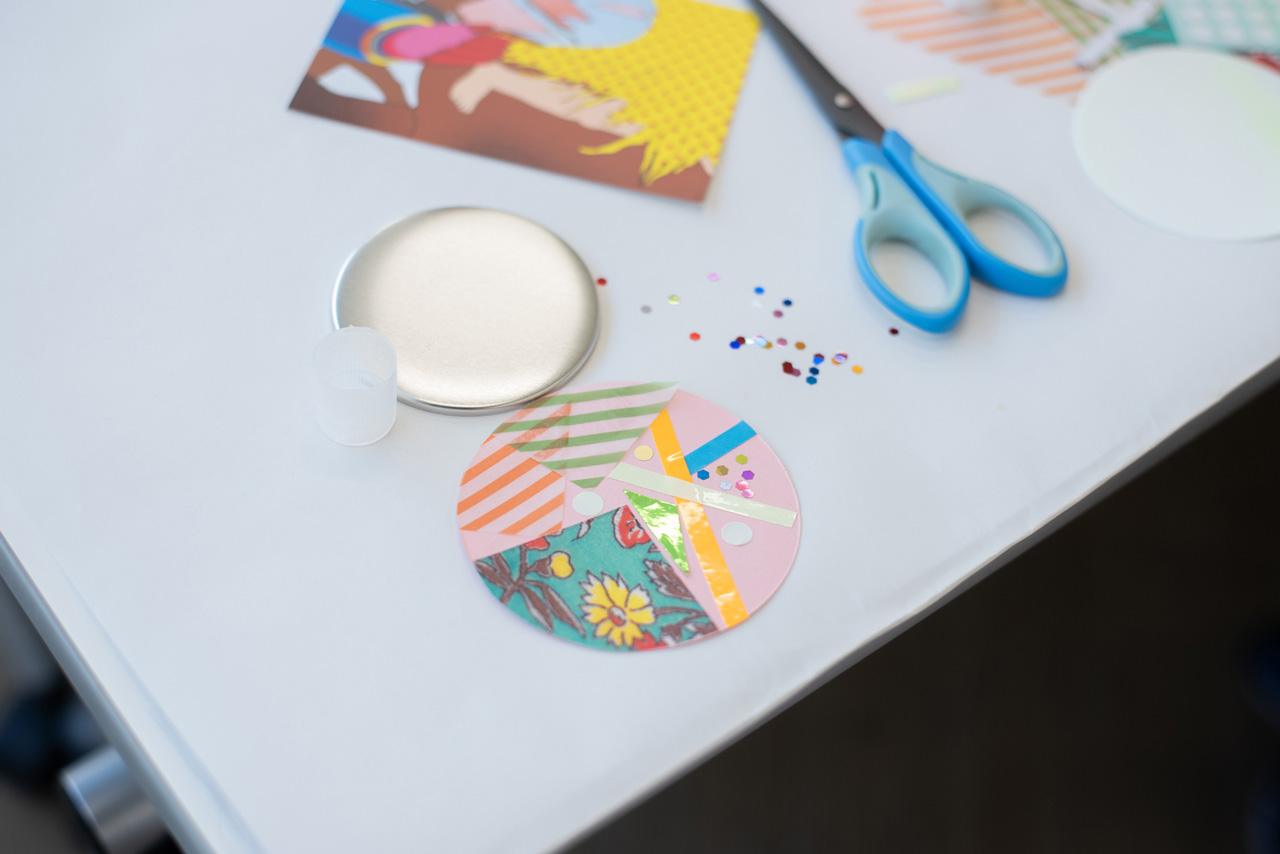
The fee was 100 yen per badge, with a limit of two badges per person. After checking in and receiving their badge bases, participants were guided to tables to start creating.
Materials for badge patterns included chiyogami (decorative paper with colorful patterns), colored paper, yarn in various textures, glittery tape, and colorful masking tape. There were also unexpected materials like aluminum foil, plastic ribbon, and pipe cleaners that might not immediately suggest how to use them.
The area with rows of materials was like an exciting buffet of creative possibilities.
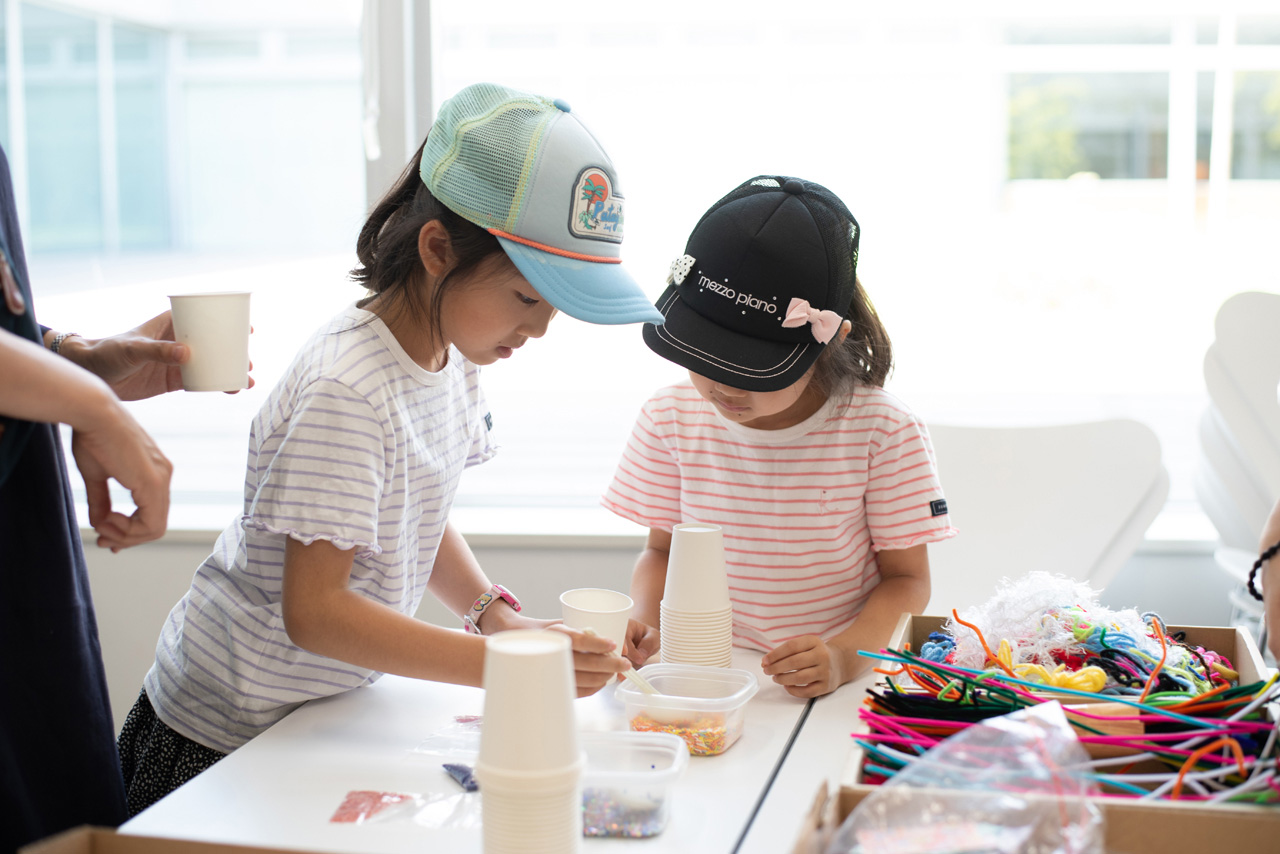
Paper cups were provided to carry just the right amount of granular materials like beads and glitter, to the tables. The children were fascinated by the process itself, scooping beads into cups with spoons as if playing house.
Some families played pretend restaurant while creating, inspired by how the materials felt in their hands: circular bases became “plates,” upon which rolled yarn became “yakisoba noodles,” and layers of paper with scattered beads on top became “ice cream” topped with colorful “sprinkles.”
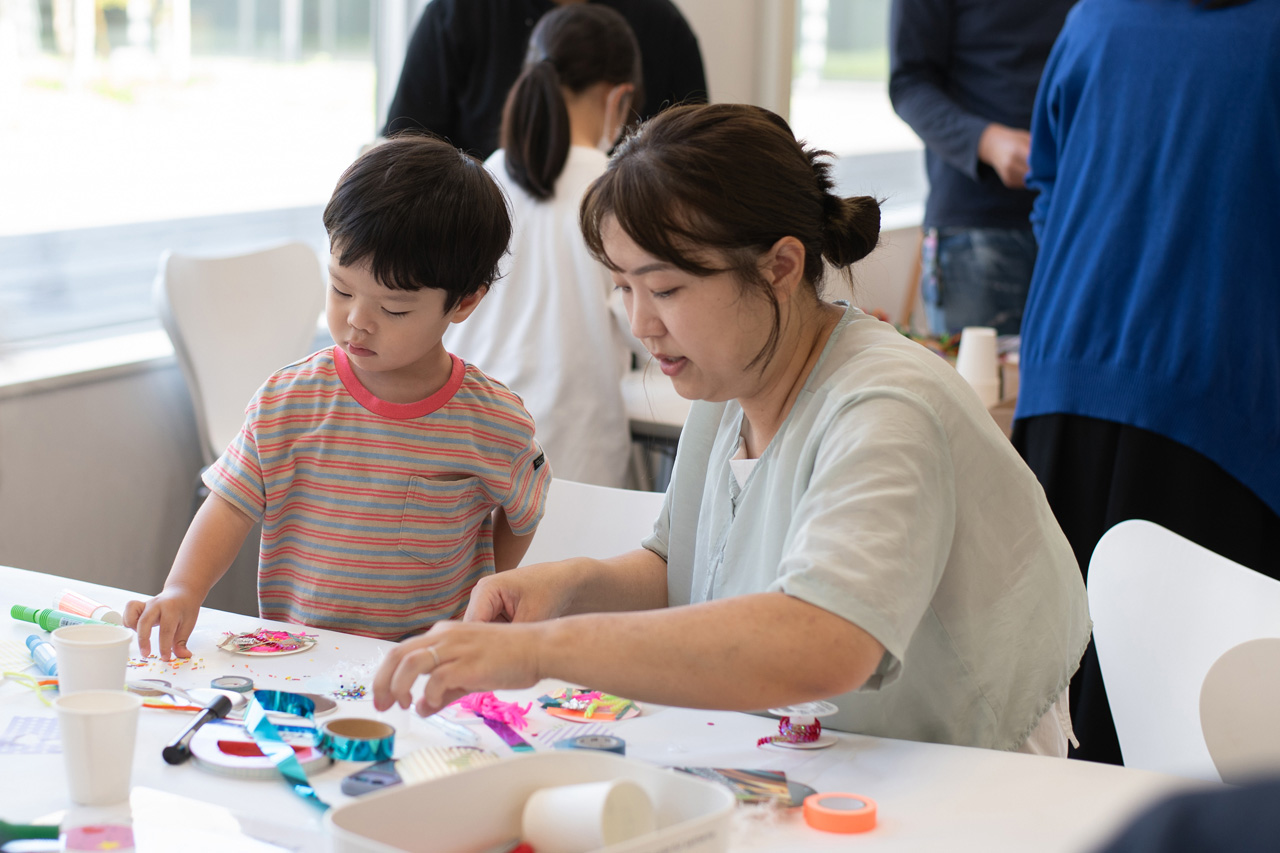
One feature of this event was that a simple pattern could be completed in about 20 minutes—perfect for young children’s attention spans. Even babies in their mothers’ arms participated by placing stickers with their tiny fingers to create patterns.
Finally, covers were placed on the bases and pressed into badge parts using a special machine.
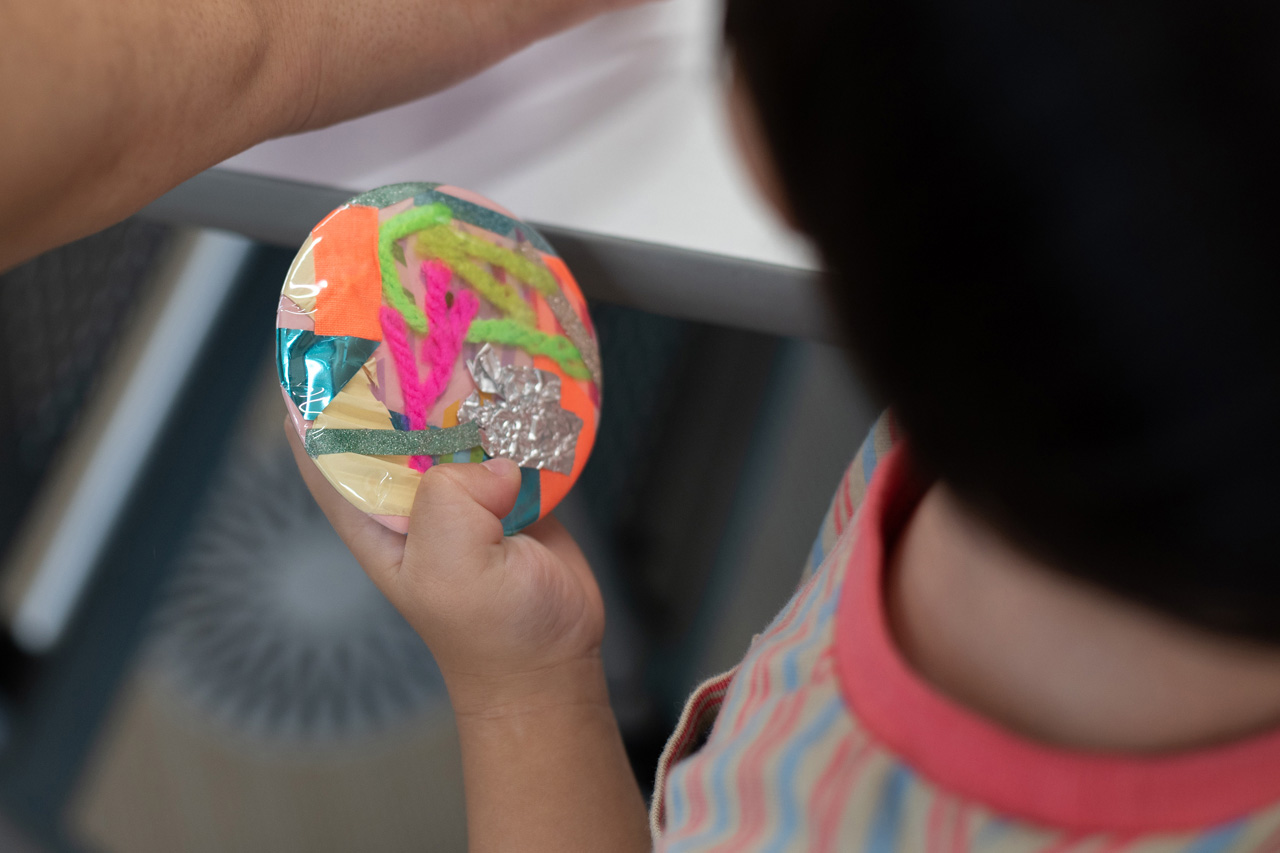
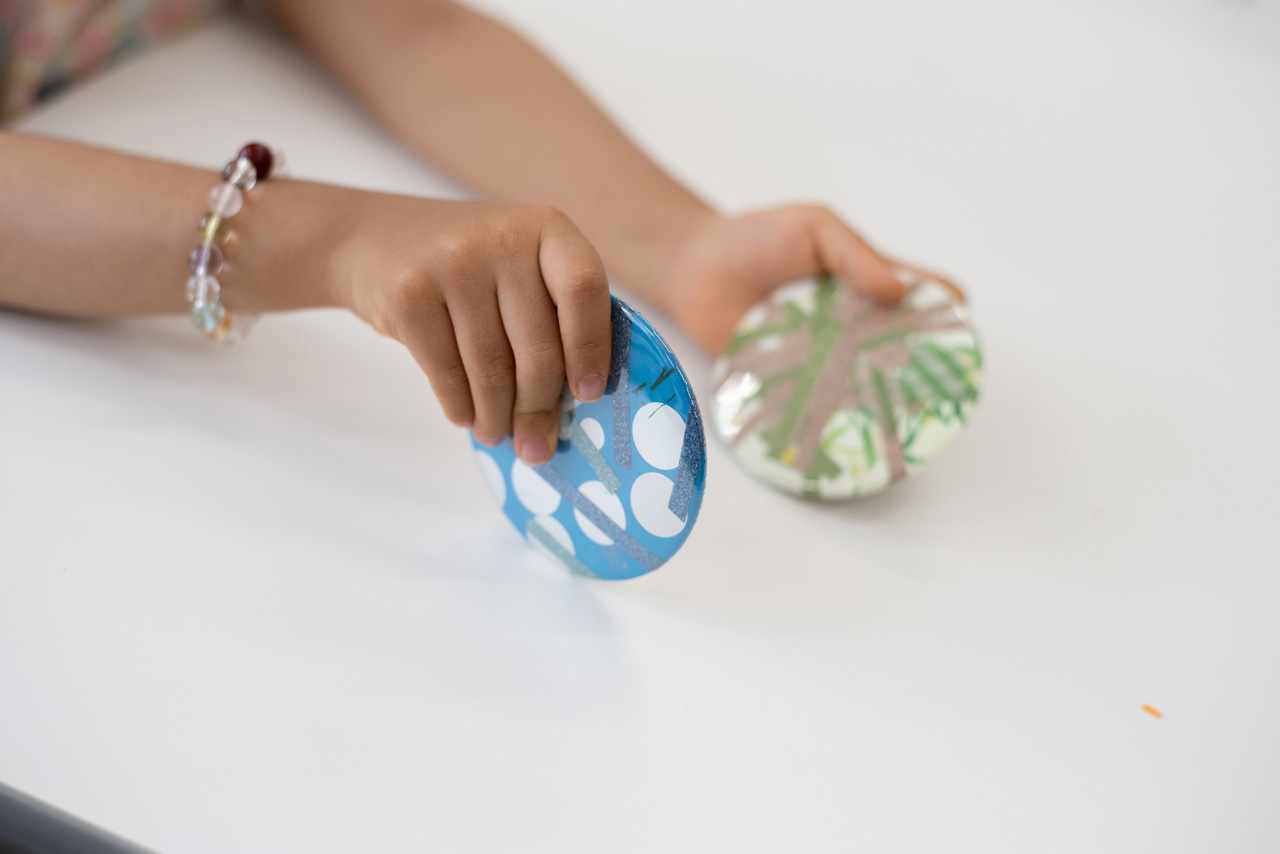
The children watched with excitement as their designs became real badges. The staff operating the press carefully handled the machine to preserve as much of the children’s designs as possible.
One boy who came with his father said, “I’m going to show this to Mom when we get home!” as he carefully carried his finished badge out of the workshop venue.
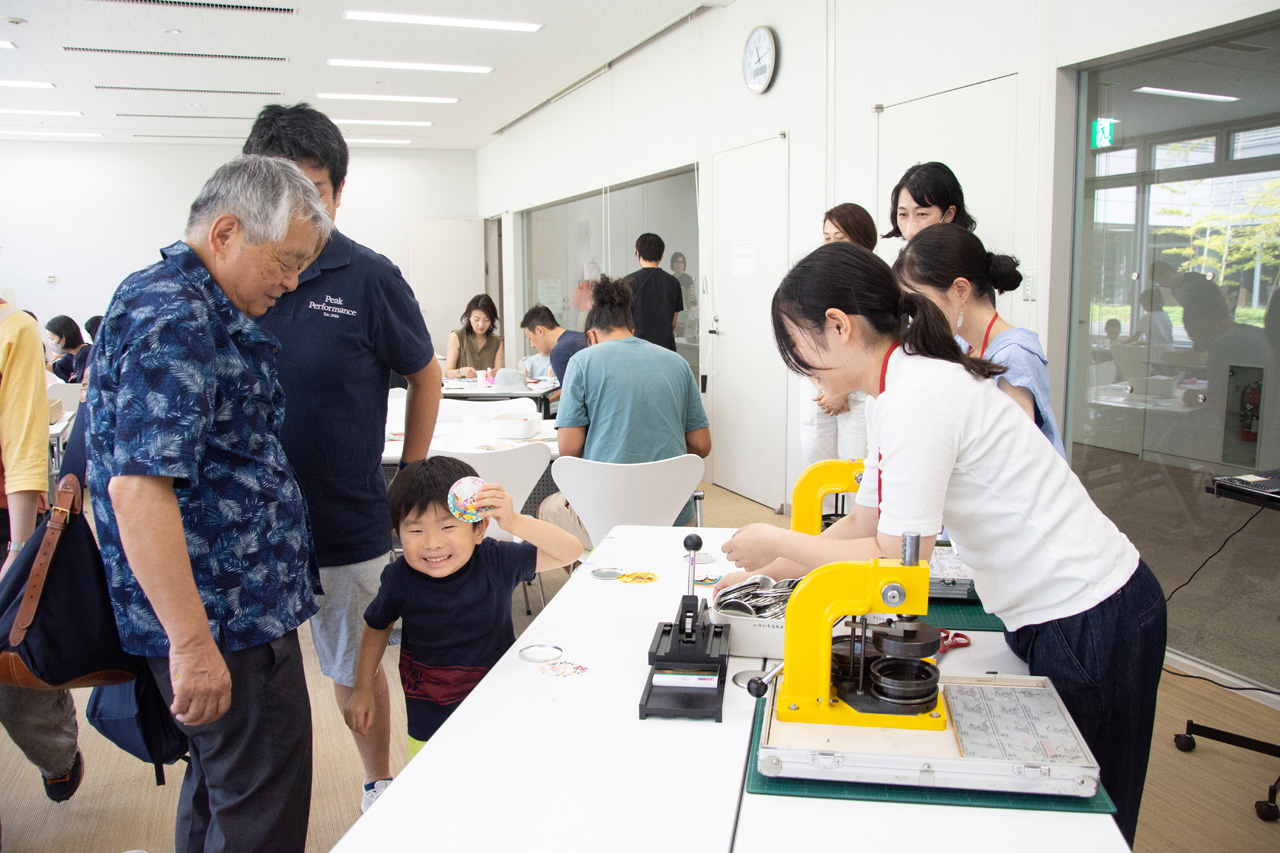
A Treasure Hunt of Creativity
Some participants took their time to create quite elaborate designs. They made pointillist patterns with tiny stickers, shaped animals out of aluminum foil, or layered transparent materials. Seeing other participants’ creations sparked new ideas. Perhaps because badge-making is such a simple theme, the children could enjoy it in different ways according to their age and individual characteristics.
Among the provided materials, an unexpected favorite was scraps from exhibition posters. Participants cut out animals’ eyes from the posters to create new creatures or boldly arranged printed Chinese characters in their designs. These materials, unique to an art museum, seemed to stimulate participants’ creative spirit.
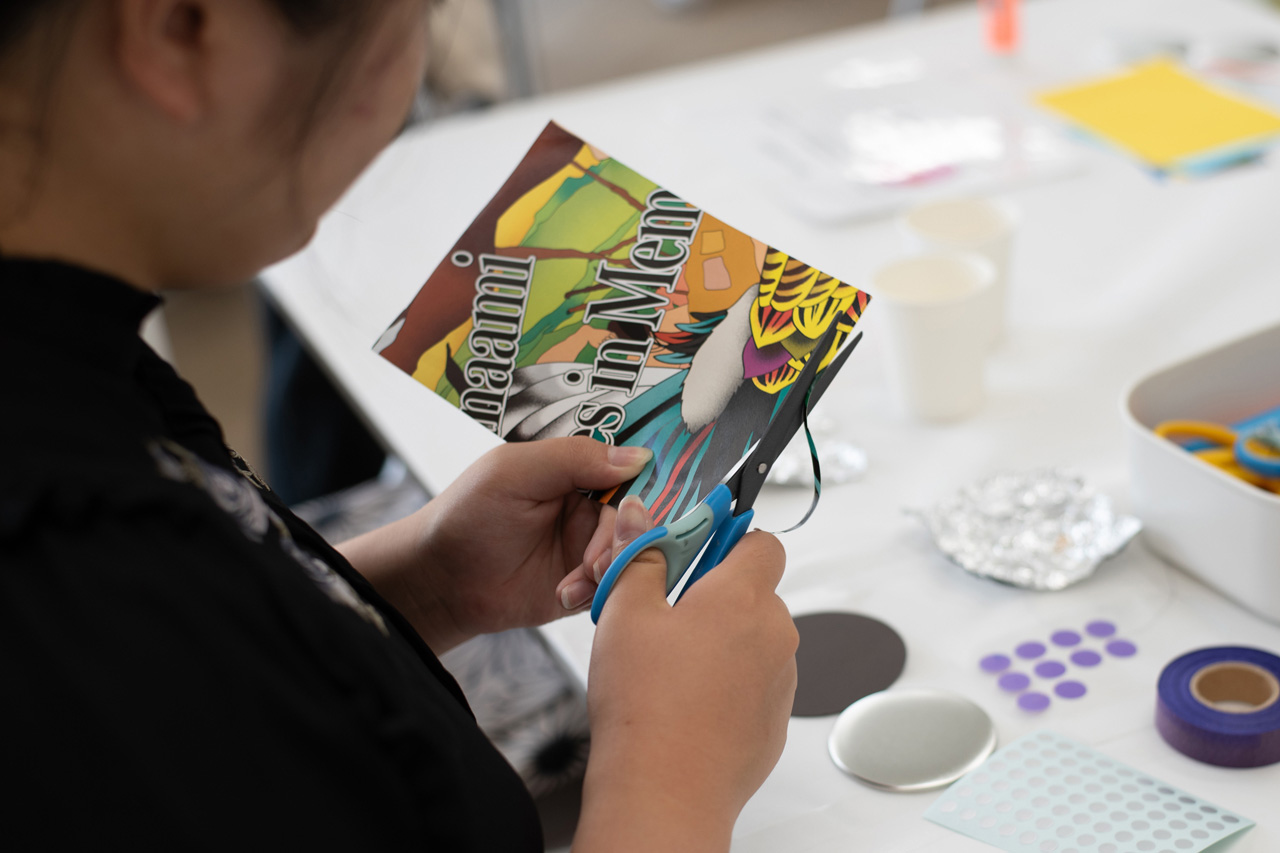
“Some participants mentioned that while cutting pieces from posters, they became interested in the printed artworks and exhibitions. The experience of creating something yourself might become an opportunity to engage with art more actively and personally,” says Ms. Miyashita, the educator at The National Art Center, Tokyo who was in charge of this event. She hopes that participants take home special museum memories that go beyond just viewing artworks.
“In the materials corner, we deliberately mix in leftover pieces from cut mat board, short pieces of yarn, and other odds and ends. We try not to decide on our own that ‘this can’t be used, let’s throw it away’ because we never know what materials might interest people until we actually put them out.”
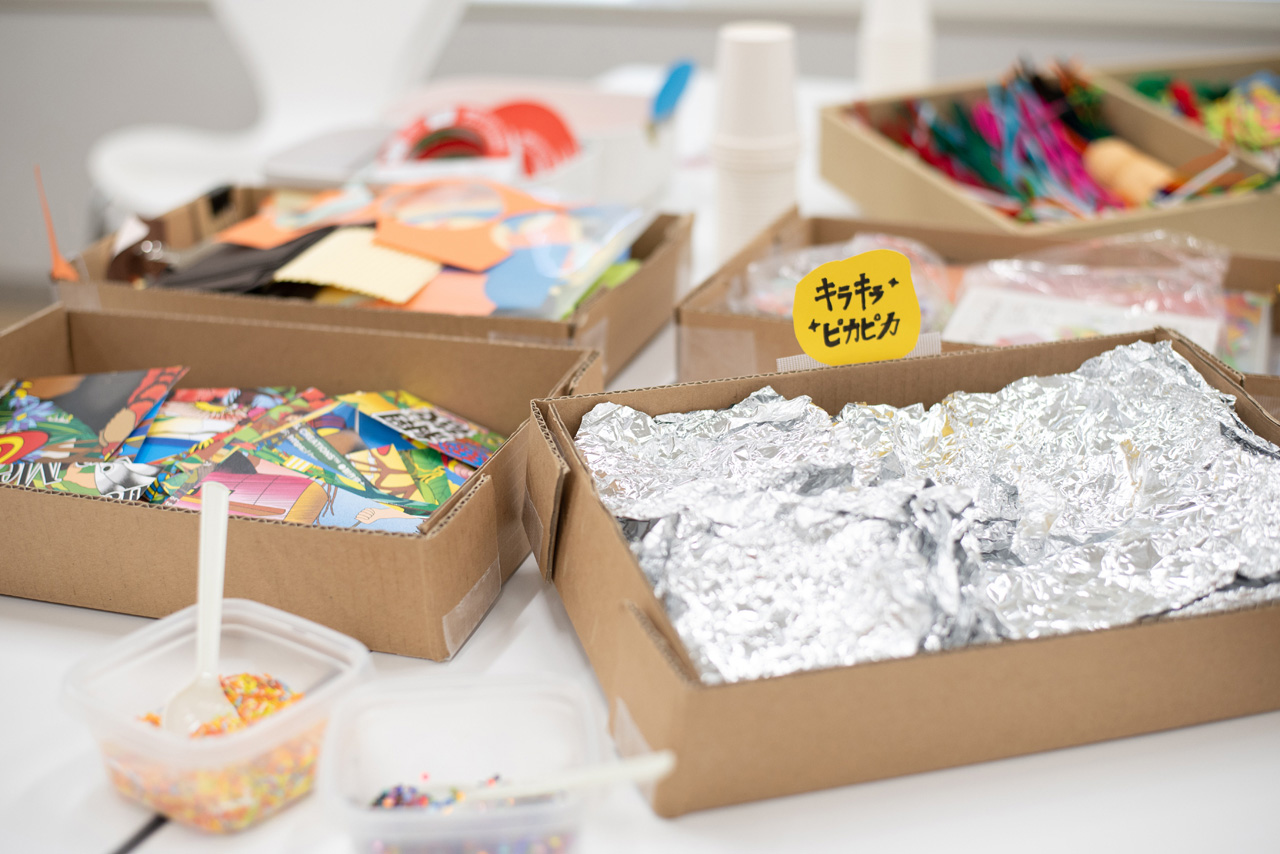
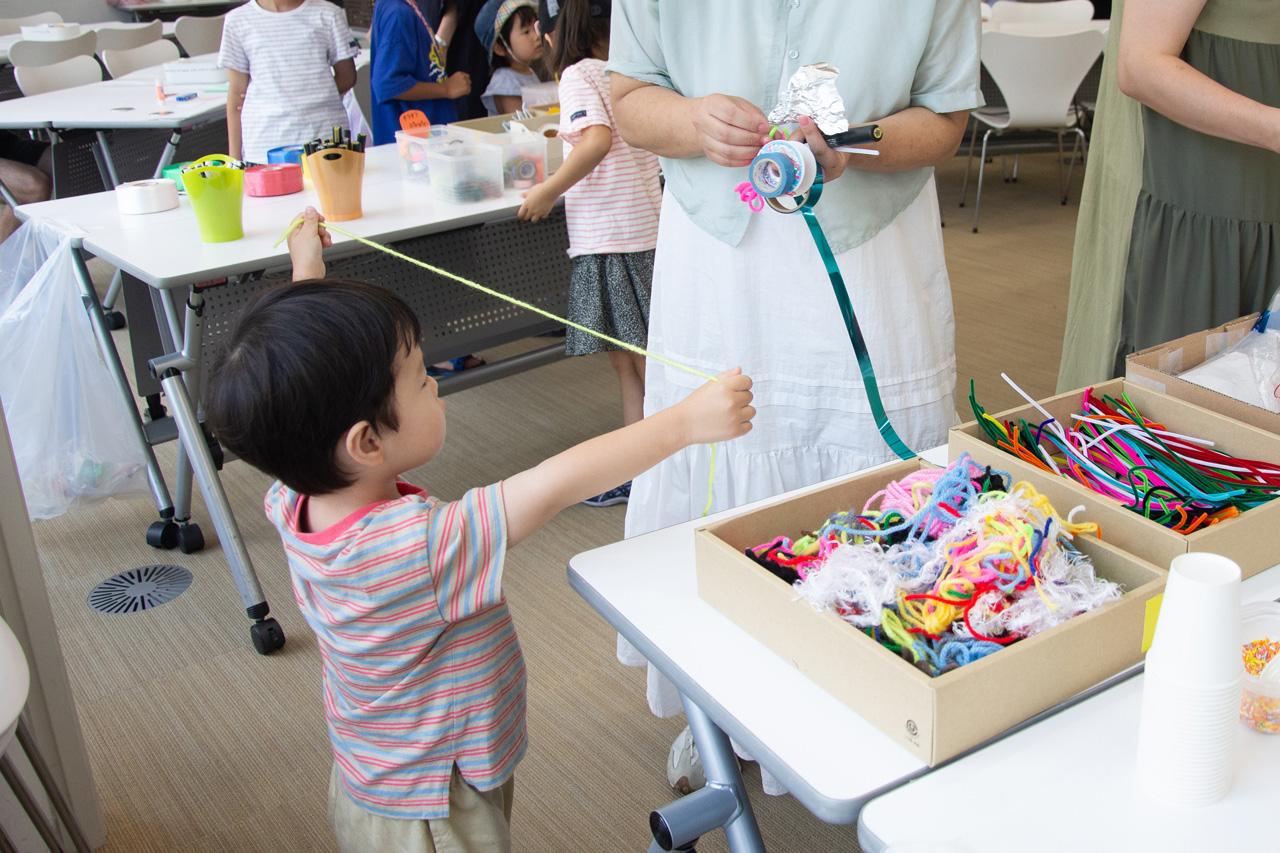
A Place for New Inspiration
Since its opening, The National Art Center, Tokyo has hosted various events, including exhibition-related lectures and artist-led workshops. However, most required advance reservations, making it difficult for families with young children or casual visitors to participate spontaneously, even if they were interested.
That’s why, in 2018, the NACT started this badge-making activity as a drop-in workshop anyone could join on the spot.
The response was enthusiastic from the start, and every year, they’ve continued to hunt for ways to improve the experience by setting different themes and adding new materials.
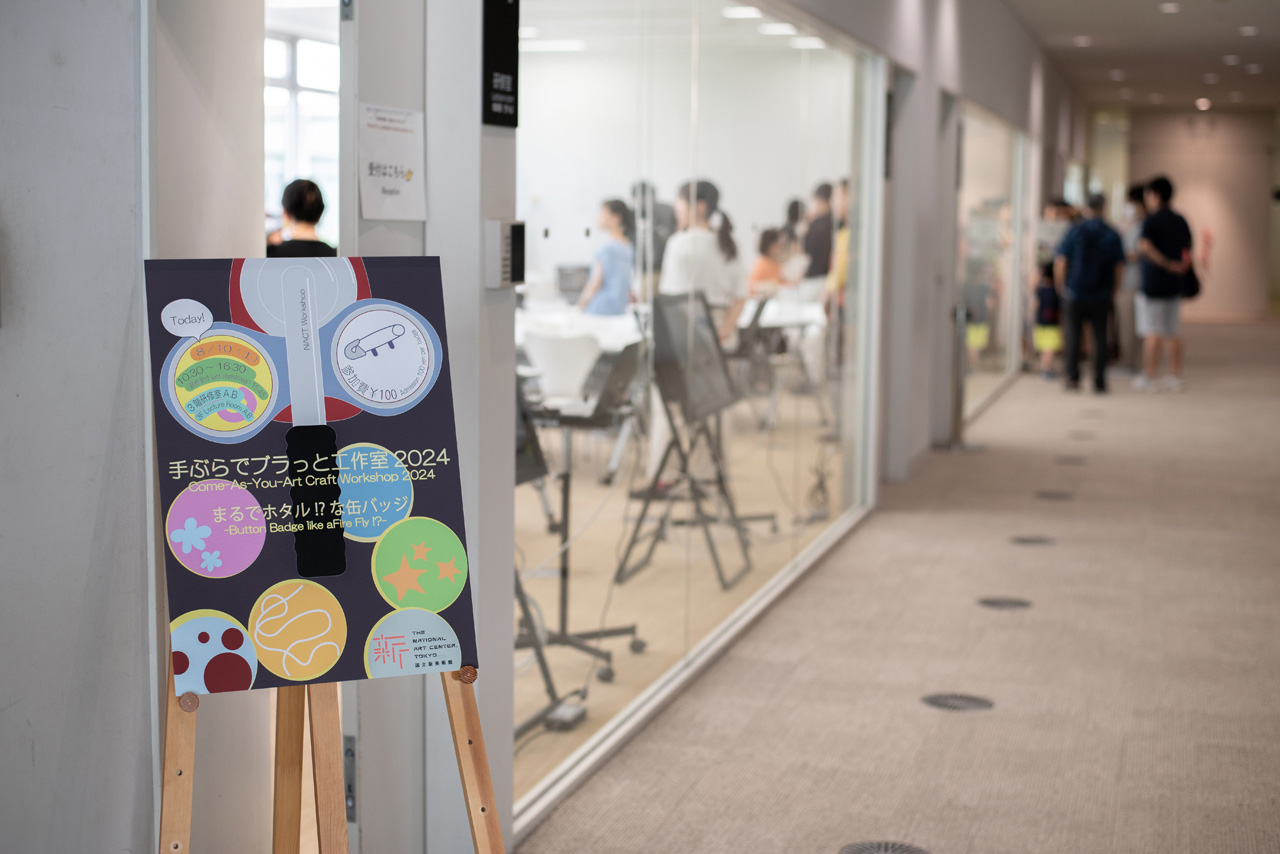
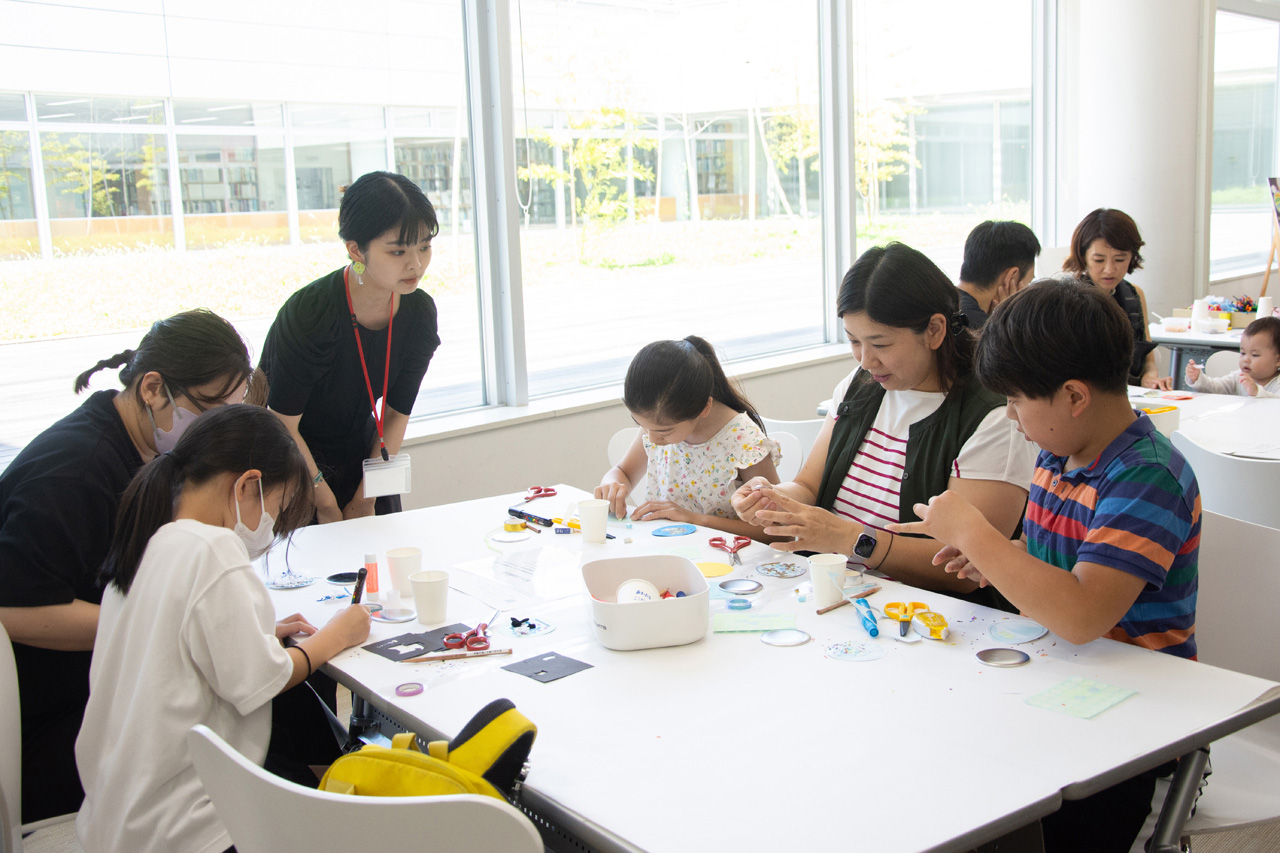
True to the “Come-As-You-Art” theme, tables are equipped with multilingual instruction sheets so participants can work at their own pace without constant staff supervision.
The event is run primarily by the NACT’s Education and Public Programs staff and student volunteers, while the planning is part of training for university student interns at the NACT.
Having interns take the lead in selecting materials and setting sub-themes means that although the workshop format stays the same, each year brings slightly different characteristics. This year, inspired by the “firefly” sub-theme, they added glow-in-the-dark materials. Beyond commercial phosphorescent tape, the interns created original materials by applying luminous paint to pipe cleaners and mat board bases, offering various ways to play with light.
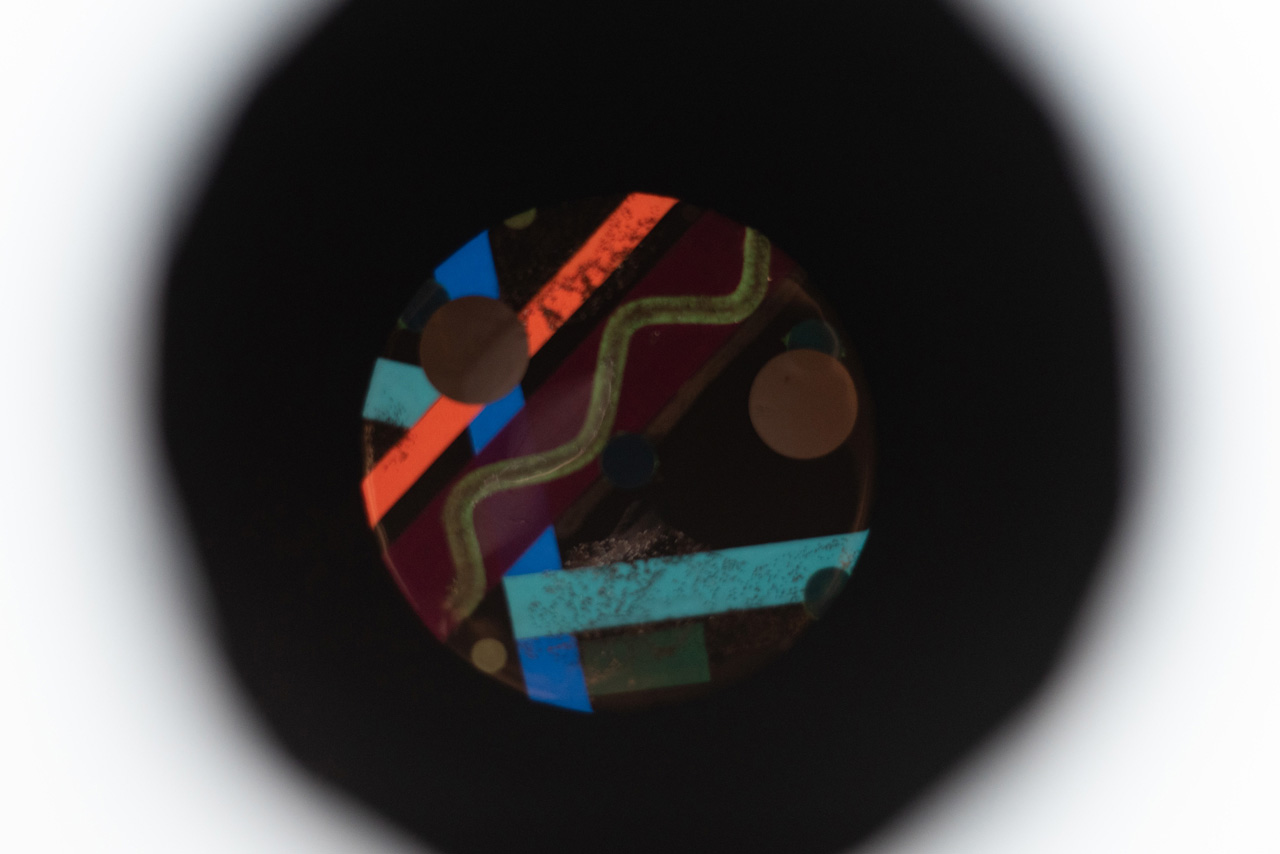
The workshop space even included custom darkroom boxes, where participants could see how their finished works actually glowed. This proved to be an exciting attraction for children.
They would set their handmade badges inside and peer in, wondering, “Will it glow?” Friends would share the experience, saying, “Let me see, let me see!”
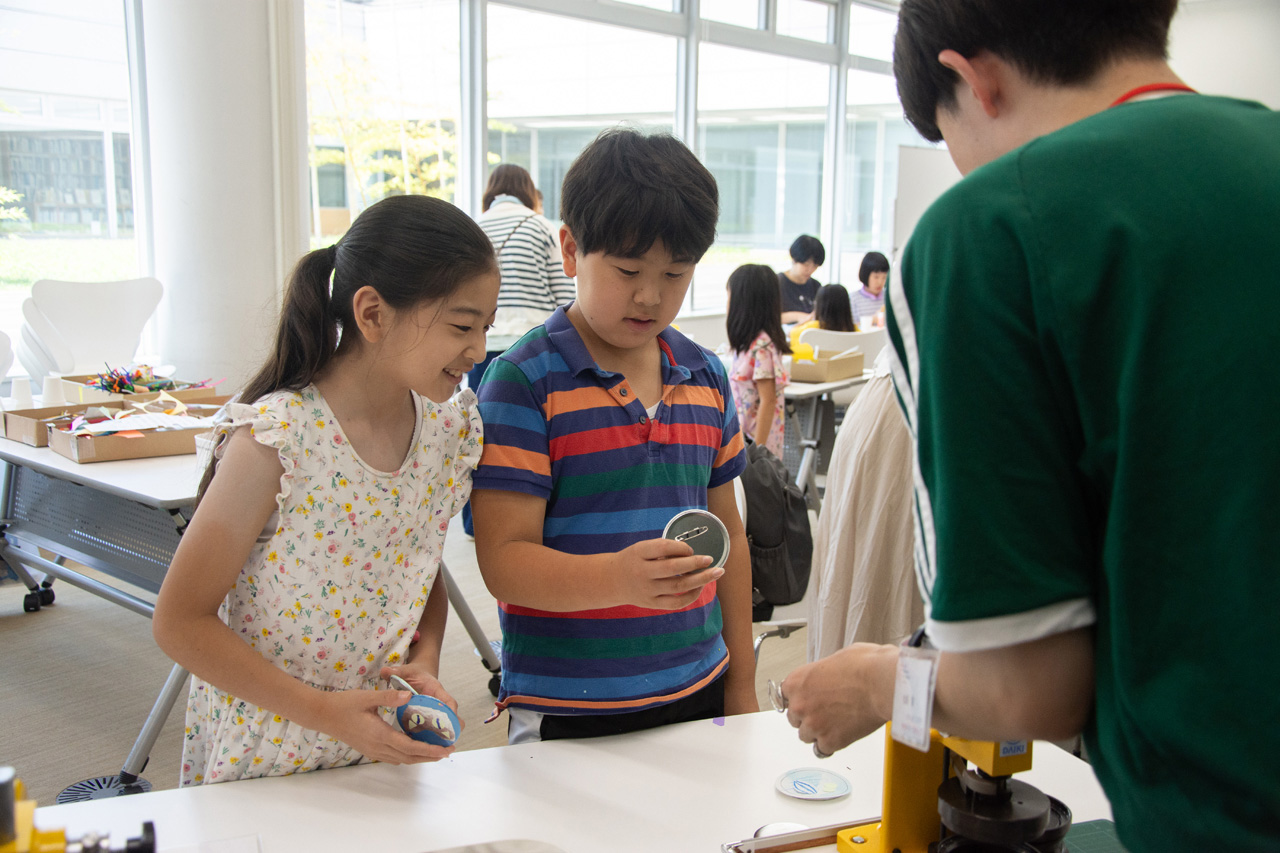
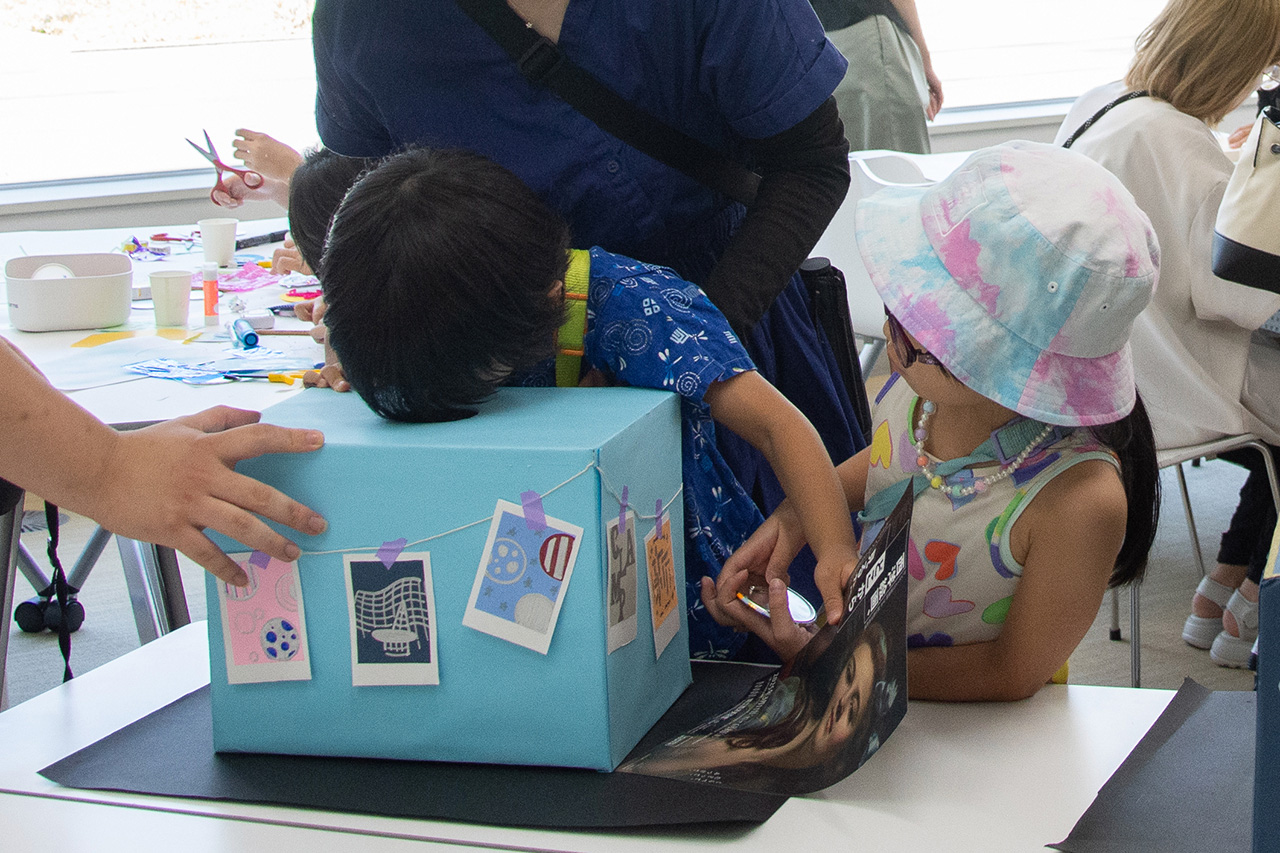
Photos of the badges taken with a lens inserted into the box’s opening were projected on an indoor monitor, visible even from the adjacent hallway. Passersby would stop to look, intrigued by the various designs and workshop activities.
Perhaps it’s precisely because the NACT is a place where people with diverse purposes meet that visitors may find themselves inspired by the activities and the presence of others, creating new inspirations together.
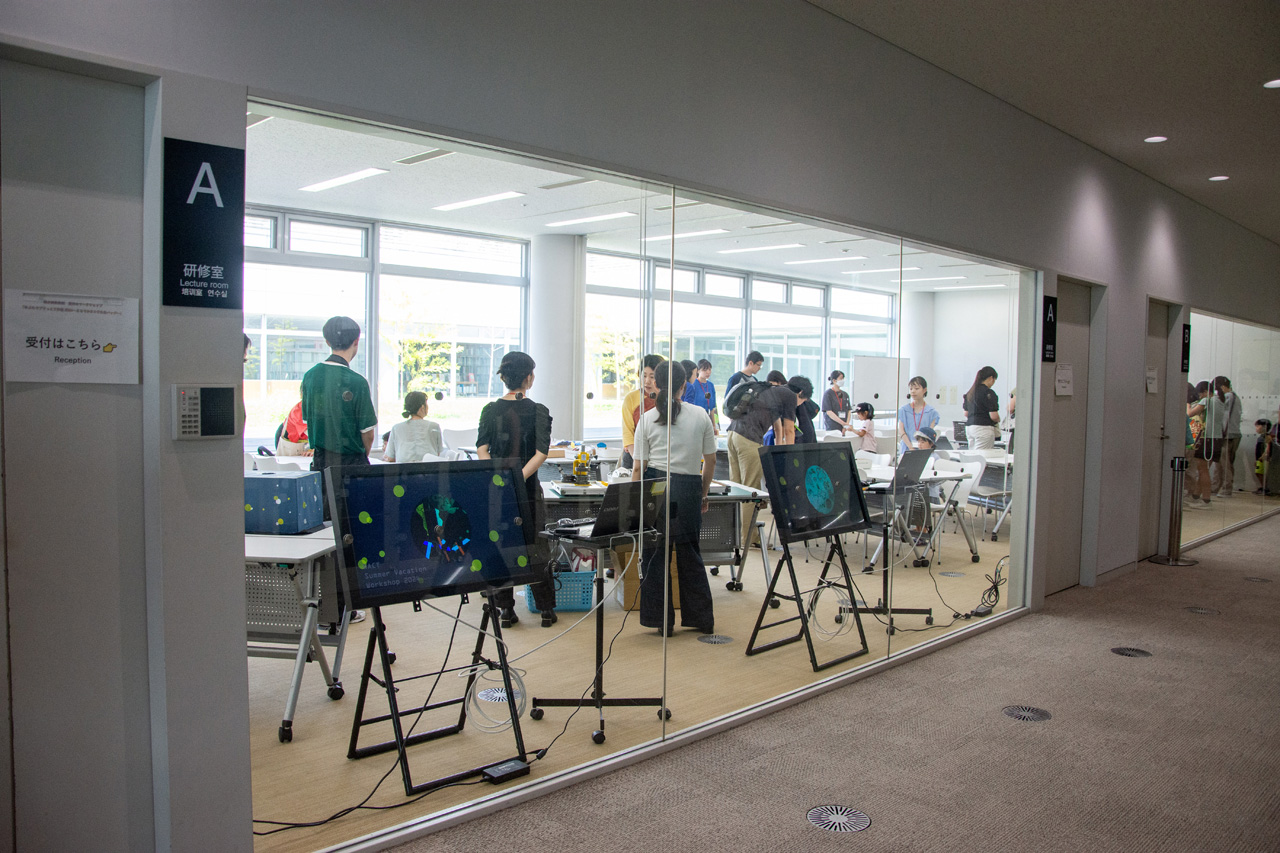
Date of interview: August 10, 2024
Editing: Yukako Takahashi
Photo: haruharehinata
